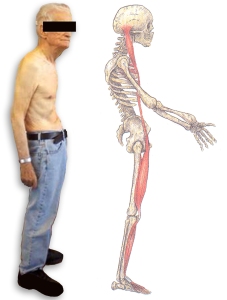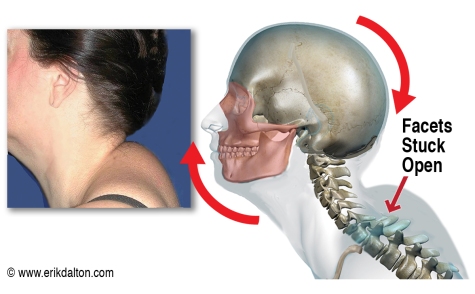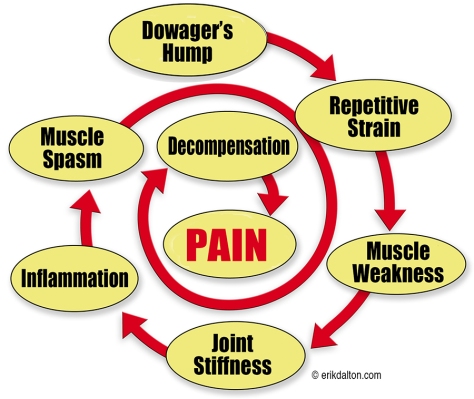One of the primary postural goals for manual therapists is restoration and maintenance of proper vertebral curves, which exist for a reason: to provide the least amount of strain to muscles, tendons, ligaments and joints so they can carry on with daily chores. If compromised, the risk of injury, protective muscle guarding and development of pain/spasm/pain cycles escalates.

It’s not entirely clear what causes it. Most likely, there are many underlying causes. Dowager’s Hump, hyperkyphosis, may be a multifactorial problem: Length-strength imbalance, motor control issues, degenerative disc disease, ligament laxity, and possibly certain metabolic problems top the list of potential causes. There may also be a genetic link as well as it seems to run in families.
Since it’s more obvious when viewed from the side (and most people view themselves in the mirror from the front), hyperkyphosis can progress quite a bit before anyone seeks help for it.
Dowager’s Hump can cause neck, rib pain and breathing disorders, but can also be asymptomatic.

Even in moderate cases, it can be difficult to lie on the back comfortably because the head is flexed so far forward.
Neuroscientists tell us our movement patterns are more or less hardwired by the time we are in our 20s, so why do dowager’s humps often develop later in life? When asked, the legendary Dr. Moshe Feldenkrais, founder of the Feldenkrais Method (mindful movement to bring new awareness and possibility into every aspect of your life), simply responded “lack of variety of movement patterns”.
As we age, aberrant patterns become habitual, repetitive and narrow; pain/spasm/pain cycles develop; we have injuries; our posture worsens. The conversation between body and brain becomes increasingly difficult and unreliable. Eventually, coordination, balance and movement may become very limited.

The first line of defense is postural therapeutics, i.e. Myoskeletal Alignment Therapy, in conjunction with home-retraining rehabilitation or referrals to competent functional movement specialists, including Yoga.
